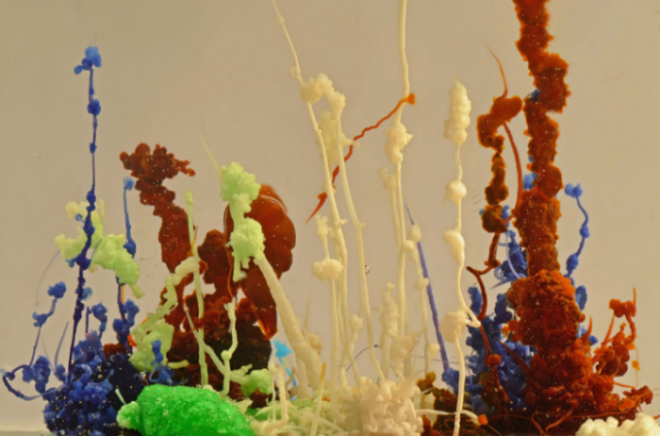Chemical gardens are curious plant-shaped structures formed by a combination of salts that are precipitated by a combination of forced convection from osmosis, free convection, and chemical reactions. Adding a crystal of a soluble salt to a sodium silicate solution causes a reaction giving rise to a colloidal gel around the crystal. The gel acts as a semipermeable membrane through which water and other ions pass by osmotic pressure. The crystal continues to dissolve and the gel-membrane is tensed by the osmotic pressure until it breaks, leaving a jet of fluid from the solution around the crystal into the external solution and upon entering another medium the solubilities change and salts precipitate as these jets arise. . Thus, at each breaking point, tubular fibers are formed that can reach several cm in length, adopting biomimetic forms receiving the name of ‘gardens’. In addition to their purely scientific fascination as spectacular examples of pattern formation, chemical gardens may be implicated in other phenomena of industrial interest involving precipitation through a colloidal gel-membrane that separates two different aqueous solutions, such as, in the cement technology and the phenomenon of metal corrosion. However, the process, its control and the variation of the chemical composition in the various surfaces of these formations are still not well known and have only been studied in some very particular cases.
It is a fascinating interdisciplinary project where interesting issues are addressed for Biology (patterns in living beings), Chemistry (dissolution and precipitation), Physics (osmosis, diffusion, crystallization) and Geology (patterns in minerals and other geological systems). and that it can be a good introduction to laboratory experimentation in Natural Sciences. The researchers of this project have already carried out this initiative occasionally in some educational center and also in collaboration with a secondary education consortium in the USA. The project tries to explore different chemical and physical conditions that allow the student to observe behavioral changes and interpret them. In addition to learning about scientific research in the chemical laboratory, more sophisticated instruments will be used, such as Microscopy.



